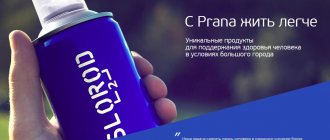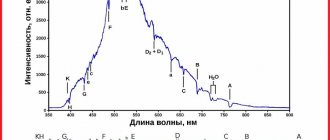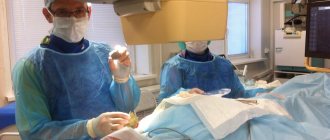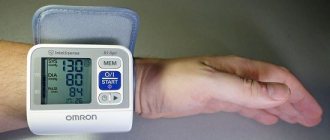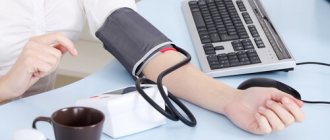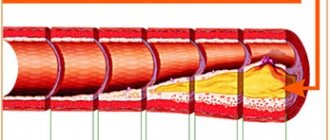Pulse oximetry
– a technique for determining saturation, or the level of oxygen saturation of hemoglobin in the blood.
This is a vital indicator that ensures the normal functioning of the cells and tissues of the body. During coronavirus, saturation levels can rapidly decrease due to pneumonia, so it is important to keep a record of the measurement results. A pulse oximeter
is a small device that is easy to use at home. In our store you can choose an option for any budget to always keep your own health under control.
- Description of pulse oximeters
- Operating principle of a pulse oximeter
- Indications for use of the device
- Application for Covid-19
- Who is recommended to use
- Details for instructions for use
- How to understand pulse oximeter readings
- Recommendations for choosing a heart rate monitor
- How to check the operation of the device
Description of pulse oximeters
Portable pulse oximeters resemble a small clothespin that fits onto your finger. They simultaneously measure two vital signs: pulse and saturation. The measurement methods are non-invasive, that is, they do not require skin puncture, blood sampling or other painful procedures. The device runs on batteries and can be stored in a home medicine cabinet. There are several types of similar devices, and it is worth familiarizing yourself with each of them before purchasing.
A clip-on pulse oximeter is the most common option and is suitable for use in hospitals and at home. You can purchase such a device in our store and use it according to the instructions. For professional use, you can also find pulse oximeters for round-the-clock monitoring of saturation levels. They are also attached to the finger, but a cord extends from them to a bracelet located on the wrist. The indicators are constantly displayed on a small monitor. There is also professional-sized equipment that is used during the treatment of patients with lung diseases in a hospital.
How accurate are home devices?
Most healthcare professionals agree that, when used correctly, consumer models are very reliable. Experts advise sticking to finger clipping technology for now. New wearables and camera-based apps use different technology to measure oxygen saturation, and so far most of these products are unreliable. A 2021 study published in the American Journal of Emergency Medicine tested three iPhone apps that offered pulse oximetry functionality, but all fell short. The authors concluded that the apps were inaccurate and lacked the ability to accurately detect hypoxia. Thus, it is recommended to use exclusively certified and approved by doctors devices.
Operating principle of a pulse oximeter
To understand the principle of operation of the device, it is important to understand what quantity it measures. Saturation is the degree to which hemoglobin in the blood is saturated with oxygen. During breathing, gas exchange occurs in the lungs. Arterial blood receives oxygen to carry it to organs and tissues. This gas is attached to a special protein, hemoglobin, which is found on red blood cells. Hemoglobin that contains oxygen is called saturated or saturated.
In the arterial blood of a healthy person, the saturation rate ranges from 96 to 100%. If you examine venous blood, the normal value will be about 75%. This is due to the fact that the blood releases some oxygen to the body's cells and then returns back to the lungs. If arterial blood saturation decreases to 94%, this indicates an acute or chronic course of dangerous lung diseases. When hemoglobin oxygen saturation decreases to 92–93% or lower, this indicates a dangerous state of hypoxia and the need for urgent hospitalization.
A pulse oximeter is a device for measuring saturation levels. It is very compact, so it is suitable for use at home, in the office, on the road and in any other conditions. It consists of several parts:
- a diode that emits light;
- light-sensitive sensor – located on the back of the finger during measurement;
- monitor on which the result will be displayed.
To determine the level of saturation, the diode emits light that completely illuminates the finger. The principle of operation of the device is the ability of saturated and unsaturated hemoglobin to absorb light. The sensor, which is located on the reverse side, detects the residual amount of light and analyzes this data. The amount of saturated hemoglobin bound to oxygen is displayed on the screen.
How to avoid measurement errors?
- Take measurements while calm and sitting.
- Select a finger on your dominant hand that is free of polish and free of bruises.
- Place your finger securely between the pulse oximeter clamps with your nail facing up.
- Place your hand on a flat surface. Make sure that it is not raised: blood should not flow away from the tip of the finger.
- The pulse oximeter will show the percentage of blood oxygen saturation in 10-20 seconds. To be on the safe side, you can continue measuring for a few minutes. This way, the device will be able to analyze the data longer and produce a more accurate average value.
If you think your pulse oximeter is wrong, test it on other people you think are healthy.
Indications for use of the device
Pulse oximetry is a diagnostic area that is informative for various diseases of the respiratory system. To assess the patient's condition and the degree of hypoxia (oxygen starvation) of tissues, the saturation level is measured. Pulse oximeters are also necessary for diagnosis and during treatment of coronavirus, which occurs with pneumonia. In addition, these measurements can be informative in the following areas:
- during oxygen therapy, to assess its effectiveness;
- during anesthesia and operations, as well as during rehabilitation;
- in neonatology, especially for examining premature babies;
- for chronic heart failure;
- with proven apnea (stopping breathing) during sleep;
- with congenital and acquired heart defects.
Patients with chronic diseases that can cause hypoxia should purchase a pocket pulse oximeter and keep it in a portable first aid kit. The measurements will be informative and will allow you to quickly determine the deterioration of your health, since the device shows data at the time of use. If you carry out the procedure daily, you can monitor the dynamics of indicators and choose more effective treatment.
Application for Covid-19
Coronavirus
– a dangerous disease that occurs primarily in the lungs.
The inflammatory process leads to a deterioration in gas exchange, so the blood is not saturated with sufficient oxygen. In addition, the damaged areas undergo fibrosis over time and are gradually replaced by low-functional connective tissue. A decrease in saturation to 91% or lower is one of the characteristic signs of a coronavirus infection, which occurs in moderate or severe form. It is recommended to measure this indicator when the following symptoms appear:
- pallor of the skin and mucous membranes;
- weakness, dizziness, especially with sudden movements;
- wheezing in the lungs, cough, fever;
- deterioration of sense of smell;
- rapid heartbeat, uneven pulse, possible fainting.
A pulse oximeter must be in the home medicine cabinet for people at risk: the elderly, patients with chronic diseases of the cardiovascular and respiratory systems, as well as other internal organs. With its help, you can promptly identify dangerous oxygen metabolism disorders and seek medical help.
In addition, the device should definitely be used in the post-coronavirus period, during rehabilitation. Inflammatory processes, high temperature, general weakness and decreased immunity lead to the fact that tissues are restored slowly. Foci of fibrosis form in the lungs - islands of connective tissue that cannot participate in the breathing process. Despite the fact that the virus can be removed from the body, the patient continues to experience symptoms of oxygen starvation if the healthy surface of the lungs does not have time to saturate hemoglobin with oxygen to the required extent.
TOPMED FP-30
This pulse oximeter measures the oxygen in the blood of both adults and children. TOPMED FP-30 has the most accurate measurement, a large two-color screen, and large font. You can use the device even in the dark thanks to the backlight. Among the relative disadvantages of the pulse oximeter is that its weight is slightly larger than similar analogues, as well as its price.
TOPMED FP-30
TOPMED pulse oximeters are ideal for quickly determining saturation and heart rate. Can be used at home, in ambulance services, therapeutic departments and during screening examinations to monitor the condition of patients with severe respiratory diseases.
20
- Like
- Write a review
Who is recommended to use
Portable Pulse Oximeter
- This is a device for home use.
It is suitable for any person who cares about their own health and wants to know all the important indicators. During the coronavirus pandemic, a pulse oximeter remains one of the most useful purchases for use at home. The procedure is simple and painless, and even a beginner can understand the instructions for the device. However, regular measurements are necessary for the following populations:
- people who are at risk of coronavirus;
- for acute and chronic diseases of the cardiovascular system;
- with abnormal development of the heart or blood vessels;
- for various disorders of the respiratory system;
- during the recovery period after surgery;
- during rehabilitation after suffering from coronavirus.
It is important to understand that patients with various diseases that can cause a decrease in saturation need to receive accurate data. To do this, it is worth choosing a high-quality device that will record all changes and produce results without failure. One pulse oximeter is enough to measure the saturation level and pulse of the whole family. For children, you can choose special children's devices - they fit well in size, so they more accurately record the necessary data.
Pulse oximeters are also useful for athletes during training. During classes, oxygen that is in the tissues is rapidly burned, as the muscles experience increased stress. This can lead to a sharp decrease in saturation and deterioration in well-being. During this period, the athlete feels dizziness, weakness and other signs of oxygen starvation. The presence of a compact device will allow you to quickly determine the cause of poor health and select loads in accordance with the physical capabilities of the person.
CONTEC CMS 50DL
This pulse oximeter has a built-in oxygen sensor and digital display. You can easily measure saturation even in poor lighting. CONTEC CMS 50DL is equipped with a sound signal, which is very convenient. The batteries last for 24 hours of continuous operation. The pulse oximeter automatically turns off after 8 seconds of inactivity. CONTEC CMS 50DL has an affordable price and is easy to use. Among the disadvantages are sometimes different saturation indicators on the right and left hands, as well as a long period of measurement itself.
CONTEC CMS 50DL
The portable device CMS50DL is designed to determine the amount of oxygen contained in capillary blood. The device is equipped with an LED display, which ensures low power consumption and, as a result, the ability to monitor the patient’s condition for a long period of time. And the compact size, light weight and high accuracy of the results obtained allow this device to be used in almost any conditions.
17
- Like
- Write a review
Details for instructions for use
Each pulse oximeter package contains the necessary documentation, including instructions for use. It is not difficult to understand, since the device is compact and simple. Most home pulse oximeters run on AA batteries or rechargeable batteries. To use the device, you must insert the batteries and wait a few minutes. Then you should pay attention to the device's charge level - if it is low, the readings may not be accurate enough. Next, you just need to follow a few simple steps yourself or with an assistant.
- The first step is to take a stationary position, sitting or lying down, with your arm supported. It is recommended to remain in this position for several minutes before measuring to obtain more accurate readings.
- The second step is to place your finger in the special hole of the pulse oximeter. It must be clean and free of nail polish and other coatings that could affect the measurement result. The sensor will operate for 20–30 seconds, depending on the model of the device, and during this time the finger must remain motionless.
- When the results are displayed on the monitor, the measurements are completed. It is recommended to record the data in order to keep a constant record of heart rate and saturation levels. After this, the pulse oximeter should be turned off and placed in a box to keep it away from sunlight and dust.
The device can be used independently or with an assistant. Even simple portable pulse oximeters can measure pulse and saturation in bedridden patients, as well as during sleep. For longer measurements, it is recommended to use instruments that continuously read data and display it on the screen. The monitor is attached to the wrist, and the data is accurate even if you do not hold your finger in a stationary position. These pulse oximeters are effective for diagnosing sleep apnea and for monitoring heart rate and saturation levels around the clock.
How to understand pulse oximeter readings
As a result of the measurement, all data is displayed on the monitor screen. The first indicator that a pulse oximeter reads is the pulse. It is displayed in the number of heartbeats per minute. In an adult, the normal pulse ranges from 60 to 90 beats per minute. It can increase after physical exertion, with chronic diseases of the heart and blood vessels, and also as a result of a sharp decrease in oxygen levels in the blood. The pulse is not a constant value and can change frequently, so to obtain more accurate data it is recommended to measure it several times at intervals of 3-4 minutes.
The second indicator for which portable pulse oximeters are used is saturation (SpO2). It is displayed as a percentage and indicates the level of oxygenated hemoglobin. In a healthy person at rest, it will correspond to 95% or more. However, if the monitor displays a result of 98–100%, it is worth repeating the procedure - the device may be faulty. The saturation level from 90 to 94% corresponds to 1 degree of hypoxia, from 75 to 89% - 2 degrees, from 60 to 75% - 3 degrees. When saturation decreases to 60%, hypoxic coma is observed, which poses a danger to the patient’s life. It is recommended to consult a doctor if the monitor displays a saturation level of 94% or lower - even minor oxygen deprivation can significantly affect the functioning of internal organs and tissues.
Armed YX200
This device has a large display, so people with poor vision will appreciate it, as well as a charge indicator. But there is also a relative disadvantage - the Armed YX200 does not have a display backlight, so you won’t be able to use this pulse oximeter in the dark. Among the disadvantages is the long switching time. The device is great for traveling because it is as compact as possible. The pulse oximeter is controlled with one button, and if it is not used for 8 seconds, it automatically turns off, thus saving battery. And thanks to its large measurement range, the device is highly accurate.
Armed YX200
Armed YX200 medical pulse oximeter is one of the most affordable and easy-to-use pulse oximeters.
The device allows you to press one button to obtain data on the concentration of oxygen in the blood, pulse rate (with the ability to generate a graph). from 336
5.0 1 review
146
- Like
- Write a review
Symptoms of low blood oxygen
Photos from open sources
Recommendations for choosing a pulse oximeter
There is a place in any home medicine cabinet for a portable pulse oximeter. Our store offers a wide range of devices that can be used at home. They are offered with all the necessary documents and quality certificates, so they are suitable for use at home and in medical institutions. Doctors have several criteria by which they recommend choosing a pulse oximeter.
- Type of device – a simple clip-on pulse oximeter is suitable for home use. If there is a need to purchase a specific device with memory fixation, round-the-clock measurement, removable parts and other additional functions, you can find out about this from your doctor. If there are no indications, the simplest reusable model is sufficient.
- Having a license is a prerequisite. A device for measuring vital signs must be registered as a medical device. This can be checked by entering the pulse oximeter number in the state register on the website.
- A guarantee from the manufacturer is an opportunity to exchange a product or get a refund if it turns out to be damaged or does not provide accurate indicators. This can be checked after receiving the device, especially when ordering online.
The cost of a pulse oximeter is one of the important selection criteria. You should not buy the most affordable devices if you need to use them constantly. However, devices from the mid-price category usually capture all the necessary indicators well, so the measurements can be trusted. Expensive pulse oximeters with additional functions are more durable. They work even after exposure to the sun and other adverse conditions. However, for home use it is not necessary to choose the most expensive and difficult to use device.
Is there a risk of not properly monitoring oxygen levels at home?
It is possible that home monitoring may give incorrect readings or be used incorrectly, leading the patient to seek help unnecessarily. If you or someone in your home is diagnosed with very low readings, you can test your device on a healthy person to make sure it is working properly and discuss this with your doctor. And home monitoring shouldn't lull you into a false sense of security. Don't ignore physical symptoms, even if your oxygen levels are normal. You should still call your doctor if you have severe shortness of breath, fever, confusion, or any other symptom. The benefit of monitoring is that it can potentially detect deteriorating airway health before you even notice it.

